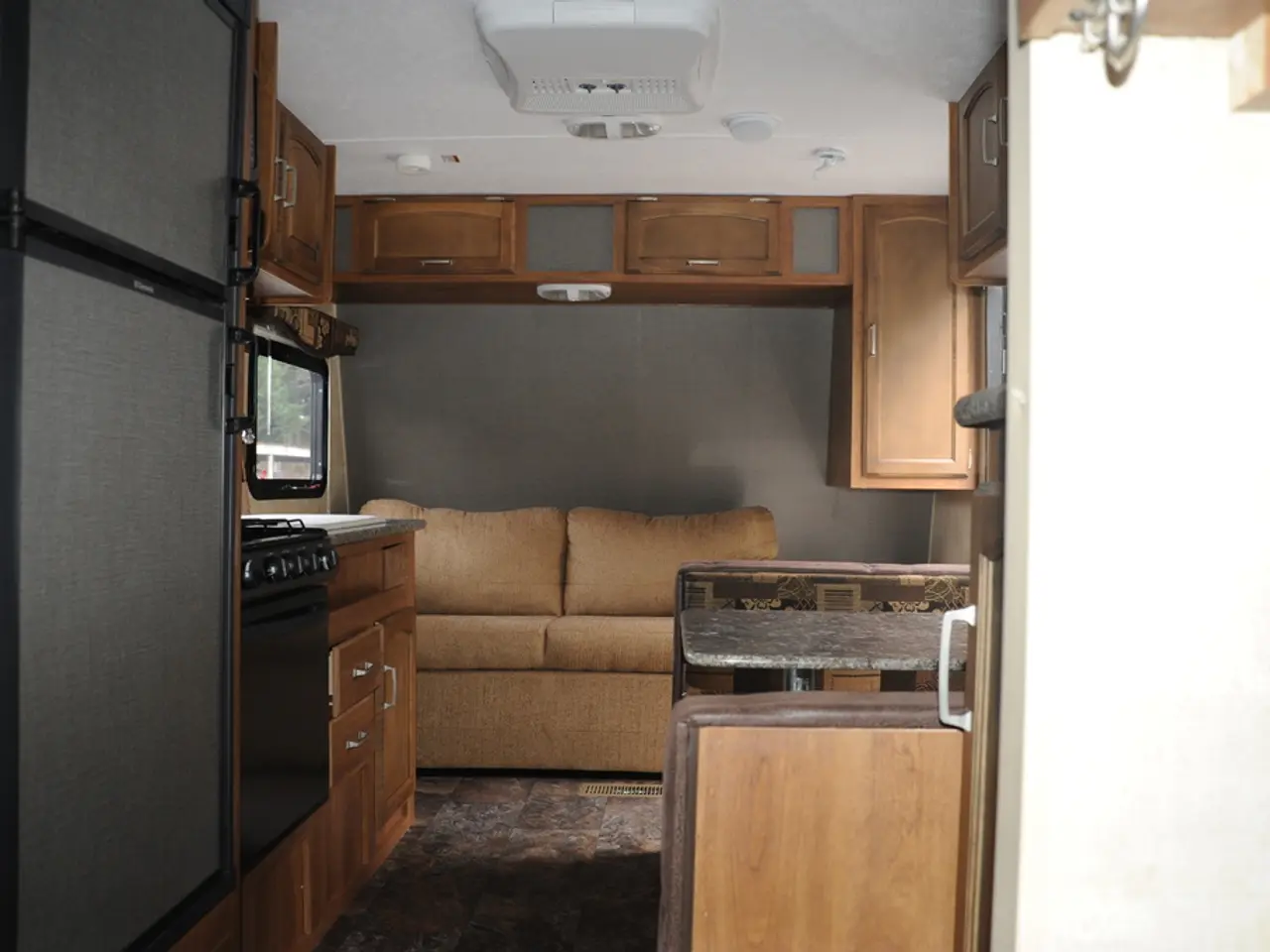Living room dimensions: Understanding the '18-inch seating rule' could transform your cramped, unwelcoming, and uncomfortable space
Creating Comfortable and Stylish Living Spaces with the 18-inch Seating Rule
The 18-inch seating rule is a practical guideline for arranging furniture in residential spaces, particularly in living rooms. This rule ensures a comfortable, cozy, and visually balanced environment by optimizing the distance between seating and surfaces like coffee tables.
According to Lesley Myrick, an interior designer and founder of Lesley Myrick Interiors, the 18-inch seating rule is based on human ergonomics, specifically reach and movement. It allows for comfortable reach to the coffee table without straining, while still providing enough space for easy movement around the furniture.
Applying the 18-inch Seating Rule in Living Room Layouts
In a standard sofa and coffee table setup, position the coffee table approximately 18 inches away from the front edge of the sofa. This distance allows you to easily reach items on the table without leaning forward or stretching.
In small living rooms, maintaining the 18-inch gap helps avoid a cramped feel, while allowing enough walking space. Using coffee tables with integrated storage or multipurpose furniture can further maximize space.
Even in larger living rooms, using this rule ensures that seating elements feel connected and functional, avoiding awkward or overly spread-out arrangements.
Adapting the 18-inch Seating Rule for Different Spaces
In a sprawling room, the gap between sofa and coffee table might be 20 inches. In a small apartment, the gap might be 15 inches. Unconventional furniture shapes might demand more creative spacing.
The Role of the 18-inch Seating Rule in Design
Jennifer Jones, the principal designer and founder of San Francisco-based Niche Interiors, notes that 18 inches is the minimum space you should allow between a sofa and coffee table. Jones, who serves as an ambassador to the Sustainable Furnishings Council and a founding member of the Good Future Design Alliance, achieves an elusive blend of sophistication and sustainability in her designs.
Lesley Myrick learned about the 18-inch seating rule during design school and uses it to set oval and round coffee tables a little closer to the sofa. She advises considering how you intend to use the space when applying the 18-inch seating rule, such as for hosting or optimizing comfort.
The book "Furniture Arrangement in Residential Spaces" is a complete guide on how to create a successful and stylish home. It includes a variety of tips and tricks on furniture placement, making it an invaluable resource for both novice and experienced designers.
In conclusion, the 18-inch seating rule is a practical and versatile furniture placement guideline that can help you create comfortable, functional, and visually appealing living spaces. By following this rule, you can ensure your living room layout is both ergonomic and aesthetically pleasing.
- Interior design in living rooms can be enhanced by adhering to the 18-inch seating rule, which optimizes the distance between seating and surfaces like coffee tables, providing a comfortable and visually balanced environment.
- In a living room, the coffee table should be positioned approximately 18 inches away from the front edge of the sofa to allow for comfortable reach to items on the table.
- Apart from providing comfort, the 18-inch seating rule also plays a crucial role in interior design, helping to create stylish living spaces that are visually appealing.
- In a small living room, maintaining the 18-inch gap between furniture helps avoid a cramped feel, while allowing enough walking space.
- For larger living rooms, the 18-inch seating rule ensures that seating elements feel connected and functional, avoiding awkward or overly spread-out arrangements, and contributing to the overall interior design and lifestyle of the home.




